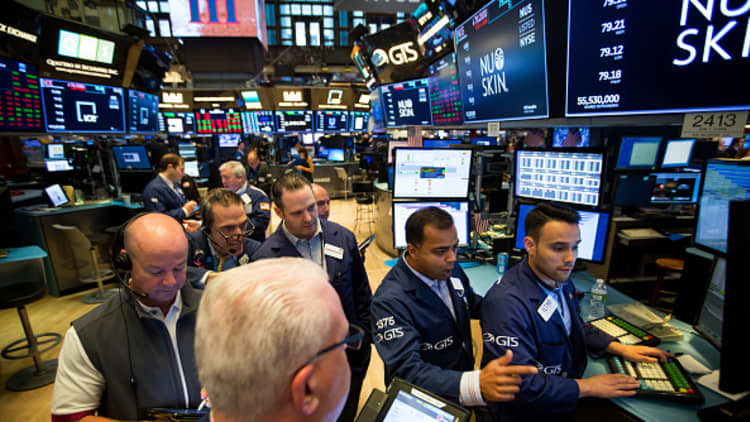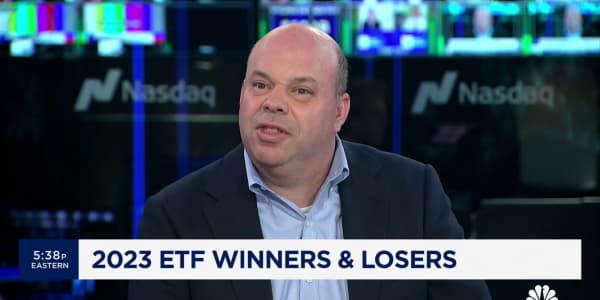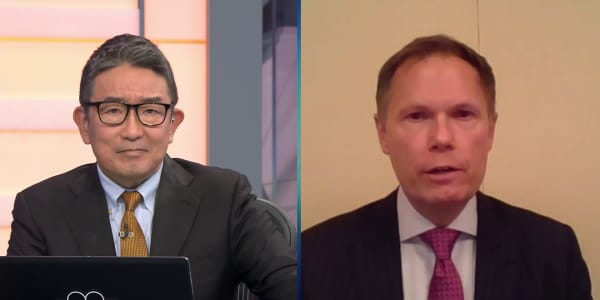Vanguard Group founder Jack Bogle once said that the only thing growing as fast if not faster than ETFs is traditional index funds. Fidelity Investments may have been listening. Just a month after announcing it would become the first financial company to offer no-fee index mutual funds, Fidelity has attracted roughly $1 billion into the two portfolios.
Fidelity's zero-fee funds covering the U.S. and international stock market have no management fee, also known as a fund expense ratio. The Fidelity ZERO Total Market Index Fund (FZROX) has taken in $753 million, according to Fidelity's website. The Fidelity ZERO International Index Fund (FZILX) has attracted $234 million.
"The $1 billion in the two mutual funds is a success," said Todd Rosenbluth, director of ETF & mutual fund research at CFRA. He said it is not a surprise, as Fidelity Investments has the size and marketing strength to support a strong launch, and he expects the assets will continue to rise. "Fidelity has the size to gather assets into a new fund quickly, but even though this is index-based, many investors will be patient to understand what they are getting."
The ETF market has seen recent launches really take off too, as big financial firms try to grab market share from ETF, index fund and discount brokerage leaders like Vanguard and Schwab. JP Morgan had two recent equity ETFs each raise $1 billion. But Rosenbluth said the strong flows into JPMorgan ETFs likely resulted a captive audience, in-house resources or institutional investors that were already prepared to invest.
Some of the fund companies hit hardest by the Fidelity move were publicly traded managers known primarily for active mutual funds, such as Federated Investors, Legg Mason and Franklin Resources, which were down more than 5 percent on the day Fidelity announced the no-fee funds in early August. These fund companies all ended down more than 1 percent on Tuesday, though it was a down day, with more modest losses, for the stock market. BlackRock ended trading down 0.7 percent on Tuesday.
Vanguard's total stock market ETF just hit $100 billion
To put the Fidelity early success into perspective, it still has a long way to go to catch Vanguard. Vanguard's Total Stock Market ETF (VTI) recently became one of only three ETFs to reach the $100-billion asset mark, joining iShares Core S&P 500 ETF (IVV) and State Street Global Advisors' S&P 500 SPDR (SPY). The Vanguard S&P 500 ETF (VOO) has $90 billion in assets. Fidelity's pre-existing S&P 500 index fund has roughly $4 billion in assets. Fidelity's existing total stock market index fund has near-$900 million in assets.
CFRA does not measure monthly assets under management, so Rosenbluth said it is too soon for him to say whether money moved from a Schwab S&P 500 fund or another index fund, though as more data becomes available it may support the asset-gathering benefits of launching a zero-fee fund.
In the past month, the Vanguard S&P 500 ETF and iShares Core S&P 500 ETF took in close to $9 billion, with the majority going to iShares, at $6.6 billion.
Vanguard, Schwab and BlackRock's iShares have been waging a battle for low-fee supremacy in the ETF and index fund space, though Fidelity is the only to offer an index fund with no management fee. Some fund experts have argued that the word "zero" doesn't have a positive marketing connotation when it comes to investments and that might limit appeal, but so far, it seems the intense fee war in the fund world has reached the point where "zero" is a selling point.
Vanguard, Schwab and iShares already offer broad stock index funds and ETFs with management fees at less than 10 basis points (0.10 percent), in several cases less than 5 basis points (0.05 percent). Schwab had been the low-cost leader before Fidelity with its total stock market index fund and S&P 500 index fund offered at a fee of 0.03 percent. Fidelity lowered the fees on its existing broad U.S. stock index funds to 0.015 percent.

In late August, Vanguard launched its upgraded brokerage site with all ETF trading offered free of charge, the first time an established financial services company has offered ETF trading for free on almost all funds except for inverse and leveraged ETFs. Online brokerage firm Robinhood, which has been gaining on discount brokers like E-Trade Financial and TD Ameritrade, has offered free trading accounts for years and has been valued in private financing earlier this year at close to $6 billion.
Investing experts have cautioned that investors should not choose funds based on fee alone, as other factors influence the overall cost of holding funds, including trading costs. There also are concerns that the era of free investing may encourage investors to trade more frequently than is good for their long-term portfolio performance, as research shows the majority of investors do not benefit from trying to time the market.





